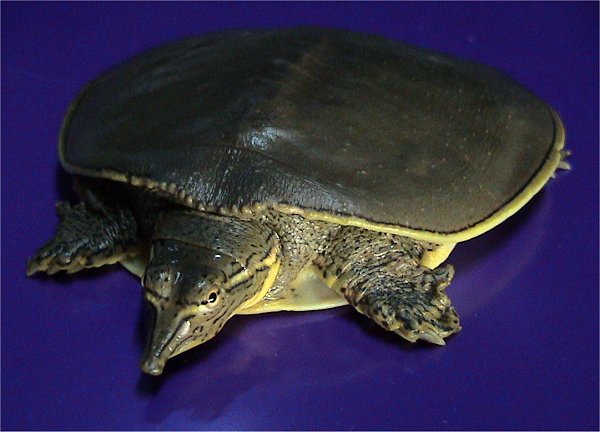
The Ultimate Guide to Keeping Softshell Turtles in Your Koi Pond
Softshell turtles are fascinating aquatic creatures that many people choose to keep in their home ponds. If you’re considering adding a softshell turtle to your koi pond, there are several important things you need to know. In this guide, we’ll cover the basics of softshell turtle care, including housing, diet, and temperature requirements.
Choosing the Right Softshell Turtle for Your Pond
There are several species of softshell turtles, but only a few are suitable for living in a koi pond. The most common species used for pond environments are the Spiny Softshell Turtle and the Smooth Softshell Turtle. Both of these species are native to North America and are accustomed to living in freshwater environments. They have a unique flat, elongated shell that allows them to move easily through water.
Creating the Right Habitat for Your Softshell Turtle
Once you’ve chosen the right softshell turtle for your koi pond, it’s time to create the perfect habitat for them. Softshell turtles require a water depth of at least 18 inches, as they spend most of their time in the water. It’s also important to ensure that the water temperature remains between 75-82 degrees Fahrenheit.
Feeding Your Softshell Turtle
In the wild, softshell turtles are carnivores and eat a diet of mainly fish and insects. In a pond environment, it’s important to provide your turtle with a balanced diet that includes both protein and vegetation. You can feed them a mix of commercial turtle food, as well as live or frozen fish, shrimp, and insects. It’s important not to overfeed, as this can lead to health problems for your turtle.
Keeping Your Softshell Turtle Healthy
In addition to providing the right habitat and diet, it’s also important to keep your softshell turtle healthy. This includes regular water changes, keeping the pond clean, and ensuring that the water temperature remains stable. You should also monitor your turtle for signs of illness, including lethargy, loss of appetite, and shell deformities.
Interacting with Your Softshell Turtle
Softshell turtles are generally not considered social animals, and they do not require direct human interaction. However, you can improve your turtle’s quality of life by providing them with hiding places, basking areas, and other enrichment items. You can also observe your turtle from a distance and enjoy their fascinating behavior in the water.
Conclusion
Keeping a softshell turtle in your koi pond can be a rewarding and enjoyable experience. By providing the right habitat, diet, and care, you can ensure that your turtle lives a long and healthy life. Just remember to do your research and provide your turtle with everything they need to thrive in their aquatic environment.





